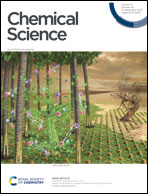A host potassiophilicity strategy for unprecedentedly stable and safe K metal batteries†
Abstract
Creating high-performance host materials for potassium (K) metal anodes remains a significant challenge due to the complex preparation process and poor K reversibility. In our work, we developed a potassiophilicity strategy using an oxygen-modified carbon cloth (O-CC) network as a host for K metal anodes. The O-CC network exhibited superior potassiophilic ability, and this improvement was also observed in other carbon hosts using the same process. The oxygen-induced epoxy group in the carbon network regulates interface electrons and enables strong binding of K adatoms through orbital hybridization, resulting in fewer side reactions with the electrolyte and promoting K-ion desolvation and uniform deposition. These factors result in unprecedented stability of the carbon network host, with a long lifespan of over 5500 hours at 0.5 mA cm−2/0.5 mA h cm−2 and 3500 h at 1 mA cm−2/0.5 mA h cm−2 in symmetric cells for K metal anodes, surpassing the cycle life of all previously reported K metal anodes. Furthermore, a high average coulombic efficiency of over 99.3% is demonstrated in O-CC//K cells during 210 cycles. The O-CC also exhibited a stable electrochemical performance, with a capacity retention of 73.3% in full cells coupled with a perylene-3,4,9,10-tetracarboxylic dianhydride cathode. We believe that this new strategy holds great promise for metal anodes in battery applications.

- This article is part of the themed collection: Most popular 2023 energy & environmental chemistry articles


 Please wait while we load your content...
Please wait while we load your content...